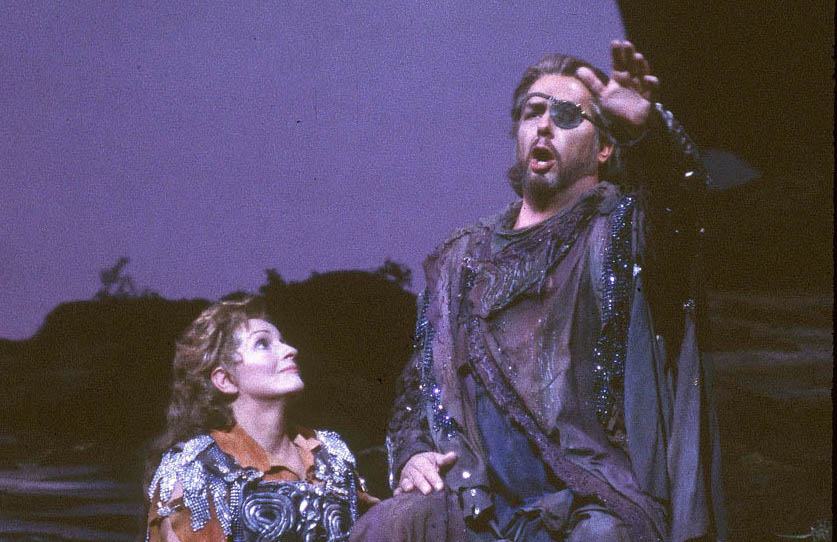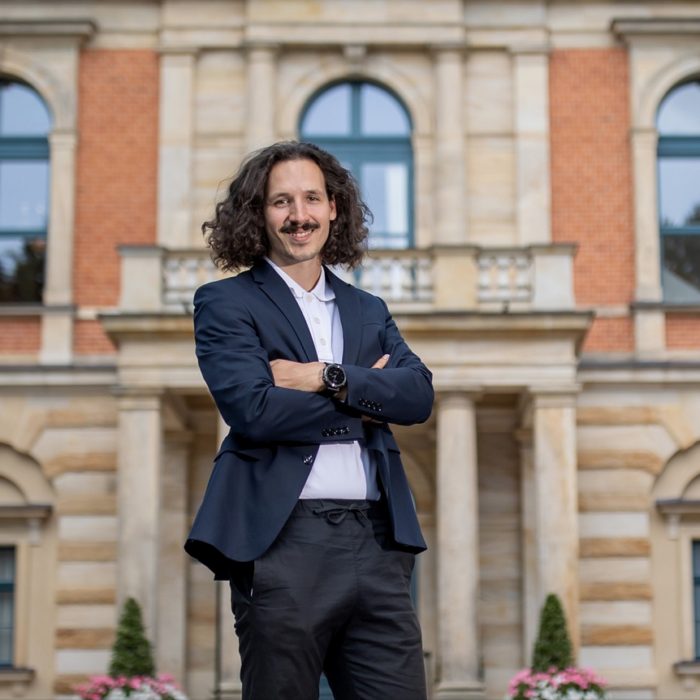
Happy Anniversary – James Morris Celebrates 50 Years at the Met
By Greg Waxberg(Credit: Colbert Artists Management)
“My what?”
James Morris, studying at the Academy of Vocal Arts (AVA) in Philadelphia, has received a phone call from his newly acquired agent at Sol Hurok management, an agent who had seen him perform elsewhere in the country and offered to represent him. Now, the agent has news: a date for Morris’ Met audition.
The bass-baritone is caught off guard because he does not want it. “I don’t think I’m ready for a Met audition. I don’t think I’m good enough and I don’t have a sufficient reputation,” Morris tells the agent, largely inspired by guidance from mentor Rosa Ponselle, who advised him not to proceed too fast, too soon, and not to approach the Met before he established a career in other venues.
“It’s not really an audition to get in,” the agent reassures him. “I just want them to be aware of you so that they keep an eye on you.” Morris is satisfied.
When the time comes, Morris is in List Hall (a small auditorium alongside the orchestra level), where the entire Met administration is present, except for General Manager Rudolf Bing. Morris sings “Non più andrai” from “Le Nozze di Figaro” and “Ella giammai m’amò” from “Don Carlo” and is invited to come to New York to participate in the Met’s young artist program. He graciously declines, only to be met with a new request: come back and sing two arias for Bing on the Met stage when stage time is available, probably in about two weeks. They tell him that the first aria will be Morris’ choice and that they will want to hear the “Figaro” aria, but not “Don Carlo.”
Back in Philadelphia, Morris quickly learns several arias for this second Met audition. Sure enough, a couple of weeks later, the Met calls, and he returns to New York in November 1970. He is so scared of what awaits him that he calls his AVA teacher Nicola Moscona (a former member of the Met roster, 1937–1961), who accompanies him to the Met. Reaching the backstage area, Morris hears “my idol” Cesare Siepi over the speaker (rehearsing Gurnemanz in “Parsifal”) and stands in the wings while waiting for his turn. (“He was so calm. It had this tranquilizing effect on me—it really calmed my nerves, just listening to him.”)
His audition now at hand, Morris is asked what he would like to sing and decides, spur of the moment because of his past successes with the piece, to offer his aria from “Don Carlo,” which is accepted. Then, Bing asks Morris what he would like to sing for his second aria—of course, he offers “Figaro”—but Bing rejects it.
This “no” catches Morris by surprise. As he frantically tries to remember other arias he worked on and which one best suits his voice, Moscona whispers fiercely from the wings, “Simone! Stupido—Simone!” [“Il lacerate spirito” from “Simon Boccanegra”] When all is said and done, Morris’ agent tells him the Met wants him to debut in January. Morris repeats that he does not feel ready to join the Met, only to be met with, “They’re aware of that, but they want to get you started with smaller roles.”
And so, 50 years ago, on January 7, 1971, three days before his 24th birthday, a “very nervous” James Morris made his Metropolitan Opera debut as the King in “Aida;” in a technological feat, the phone company hooked up a line from the Met to Ponselle’s estate, Villa Pace outside Baltimore, so she could listen to her protégé. Theodore Strongin wrote in The New York Times that he had a commanding stage presence and sang with a timbre “solid as oak.”
“The King is a showy role,” Morris told OperaWire via Skype from his home in Warren, NJ, “but not a huge role, so the weight of the show didn’t rest on my shoulders.” His first season also included Raimondo in “Lucia di Lammermoor,” Zuniga in “Carmen,” and Monterone in “Rigoletto.”
50 Years Later…
Now, over 1,020 Met performances later, having sung 60 roles in 43 operas, Morris celebrates 50 years at the Met (he has appeared every season, during the tenures of seven general managers), a milestone he was not keeping track of until friends and colleagues began talking about it a few years ago. He affectionately calls the Met his “home company” based on a decision early in his career.
“I always gave the Met ‘first call,’ so to speak. I usually based my other jobs around what the Met wanted me for, three years in advance. I always stayed close to home. I felt lucky because, even though I sang in Europe and enjoyed it very much, I never had to go to Europe to make a career. I was fortunate to be hired at the Met and other American companies without having to first get experience in Europe. But then, it is a double-edged sword because a lot of recording companies draw from people who are singing in Europe, so I probably would have done more recordings had I been over there more often, but I thought it was more important to have some semblance of a home life.”
Morris was under a weekly contract for the first few years, then switched to per-performance contracts that allowed him to choose roles and travel. But over the years, he rarely turned down offers and was seldom on the road for more than a few months at a time. As an extra treat, he loved performing with his wife (now of 34 years), mezzo-soprano Susan Quittmeyer, in Met productions of “Les Contes d’Hoffmann” (1987-88), “Faust” (1990-91), and “Le Nozze di Figaro” (1994), as well as in other productions nationally and internationally.
Another treat, in the comedy realm: participating in the televised 1975 Look-In with Danny Kaye, when the comedian introduced opera to a full house of children. “It was hilarious and the first time I got insight into the ‘show business’ of Hollywood. Nothing was scripted. The kids loved him,” Morris said.
At the time of his 25th Met anniversary (1995-96), when he sang Jago in “Otello,” Morris joked that people were wishing him well for another 25 years, but that nobody would want to hear his voice at that point . . . well, now he is at that point, and his voice sounds just as strong and healthy.
How has he kept his voice in good shape? “I’ve been fortunate with the people who advised me, and I tried to pick roles that would be good for my voice. I stayed away from heavy roles for a while. Basses can start out in smaller roles and come back to them.”
As mentioned, Ponselle was one teacher who advised Morris on his studies and emphasized the importance of emotion and interpretation. “She had a heart of gold and was very giving,” he recalled fondly.
Asked about “bass” versus “bass-baritone” for role selection or self-identification—because he has been listed as a bass in the U.S., a baritone in Europe, and a bass-baritone once the two were merged—Morris said he considers himself a bass-baritone. Jago is an example of a borderline role because it is considered a baritone role that a bass-baritone can pull off.
Overall, he said, “It’s a question of the tessitura that you’re more comfortable in. I really prefer the bass-baritone repertoire because you can go both ways—higher roles like the Flying Dutchman and Scarpia, and bass roles like King Philip and Méphistophélès. Sarastro, Osmin, or Baron Ochs—no. I don’t have a low C.”

(Credit; Winnie Klotz / Metropolitan Opera
Wagnerian Heights
Fans of Morris’ Wagner roles might be surprised by the next comment: “I think Wagner was gentler on the voice than Verdi was, at least in the repertoire that I’ve sung. There are high extensions, but it doesn’t lie up there. A lot of it is in the mid-range . . . Everyone thinks you need this huge voice for Wagner. Well, you do, but if you look carefully at the dynamics [variations in loudness between notes or phrases], and if you have a good conductor who observes the way it was written dynamically, the orchestra is rarely fortissimo when only one person is singing. Hans Hotter gave me the advice, ‘there are three or four spots in the ‘Ring’ when you’ll never be heard, so don’t even try.’”
Ahh, the Ring. From 1989 until 2009—seven revivals of three cycles each—Morris was the Met’s leading Wotan, appearing in 17 of 21 cycles, including four seasons when he sang in all three cycles; that Otto Schenk/Günther Schneider-Siemssen production was recorded for a 1990 PBS telecast and released on DVD.
“I was so lucky with the timing,” Morris said. “Without the Ring, I don’t know what kind of career I would have had at the Met. I was doing okay . . . and then I became known for Wotan and that boosted my career. That production absorbed you. Working with Hildegard [Behrens as Brünnhilde] was such an incredible experience. She never, ever let her guard down with her character. She was totally in character the entire time.”
Considering that Wotan was such an iconic Met role for Morris, it might also surprise some people that, at first, Wagner—really, German opera—did not appeal to him, so neither did Wotan. But since people in the industry were urging him to sing it, he made unsuccessful attempts to become interested: sitting in a recliner multiple times to listen to Act one of “Die Walküre” (a mistake because Wotan is not in Act one), but falling asleep each time, and listening to a pianist rehearse Wotan’s Act two monologue (“this is all about words, not music,” he thought at the time). Eventually, after being advised to start with Wotan’s Farewell and work backward, he was hooked . . . and now, Wagner is his favorite composer.
“I realized the genius. His music is very addictive and gets under your skin.”
Similarly, his other recent iconic Wagner role at the Met, Hans Sachs in “Die Meistersinger von Nürnberg,” was five years in the making, on and off, because neither the character nor the opera was making sense to him. He was having trouble getting interested in the musical style (he had sung the minor role of mastersinger Schwarz in the early 1970s, but the opera did not make much of an impact on him), and the sheer length of the role frustrated him. But people told him he should sing Sachs, so he was determined.
“It was so daunting. That role is so long, about twice the length of the ‘Walküre’ Wotan, and I couldn’t work on the whole role in one coaching session like I did with other roles. But one day, all of a sudden, I understood the character and the music. To me, Sachs is the kind of person we would all like to be—that kind of humanity—and I realized that the music fits because it’s Wagner’s only comedy. ‘Meistersinger’ became my favorite opera . . . the music is so glorious, so incredible. I’m glad I was pushed into it. Sachs has been my favorite ‘good guy’ to portray on the Met stage.”
As for “bad guys,” Morris has had fun with villains, too. Naming a handful: the pure evil of John Claggart in “Billy Budd” (for his portrayal, Morris was inspired by Robert Ryan’s “quietness” in the 1962 movie with Peter Ustinov as Captain Vere and Terence Stamp in the title role); the challenge of creating four different villains in “Les Contes d’Hoffmann;” the physicality of playing the devil Méphistophélès; the two sides of Jago; and the multidimensional Scarpia who has “one of the greatest entrances in all of opera and a wonderful death scene.”
On this 50th anniversary of his debut, Morris has messages for the administration and departments with whom he has interacted, from music, costume, and makeup to the backstage crew and props: “Working with them is what I consider being part of the Met family. The costume shop couldn’t be nicer, especially with alterations—I always say the designers should have to wear their own costumes and try to sing in them. You confide in your dresser like you would confide to a bartender or your barber. The stage crew calls me by my first name or my character name, a special feeling that you don’t get from being a guest artist in another house. I’ve been lucky that I’ve gotten along with everybody, I’m grateful for my 50 years, and I thank everyone for all they do at the Met.”



